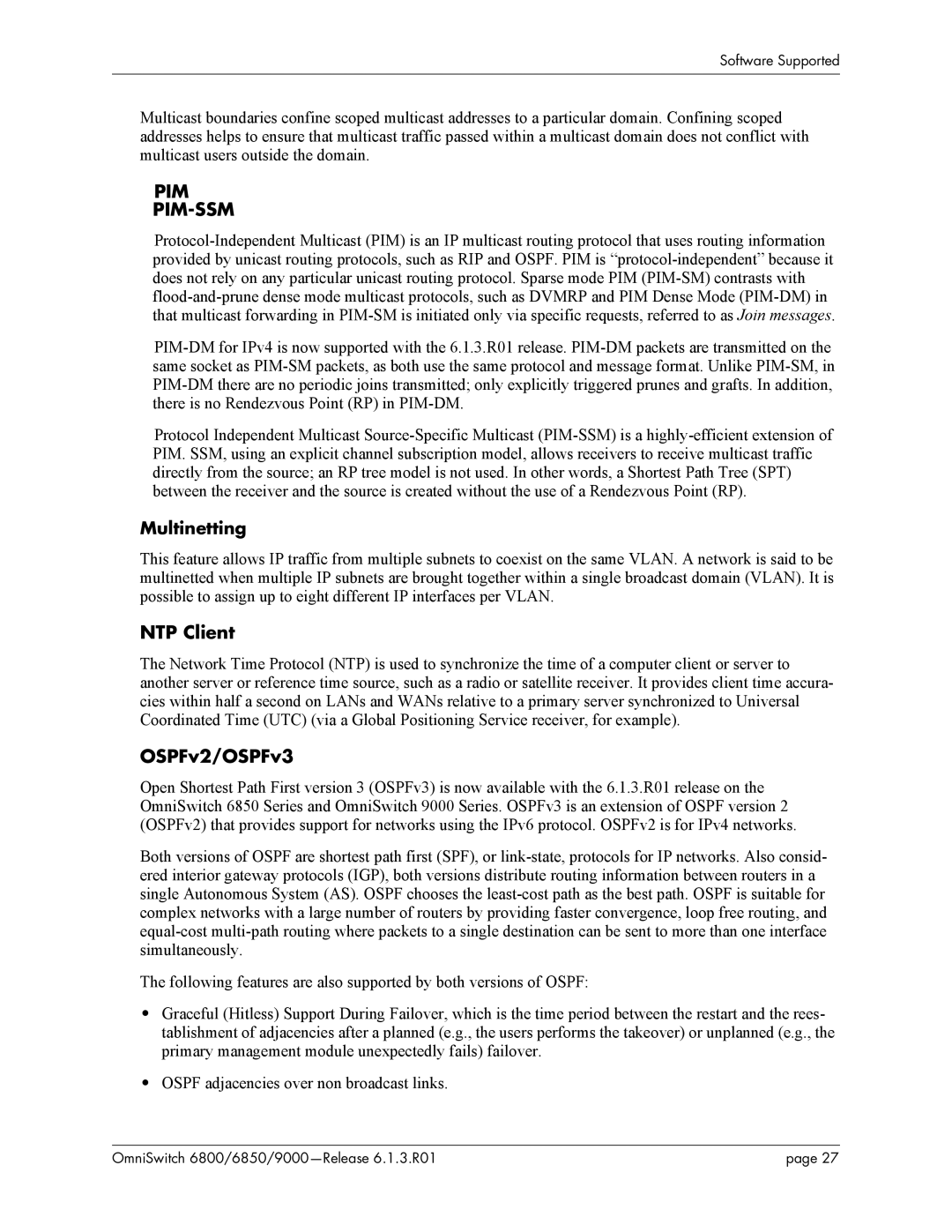
Software Supported
Multicast boundaries confine scoped multicast addresses to a particular domain. Confining scoped addresses helps to ensure that multicast traffic passed within a multicast domain does not conflict with multicast users outside the domain.
PIM
PIM-SSM
Protocol Independent Multicast
Multinetting
This feature allows IP traffic from multiple subnets to coexist on the same VLAN. A network is said to be multinetted when multiple IP subnets are brought together within a single broadcast domain (VLAN). It is possible to assign up to eight different IP interfaces per VLAN.
NTP Client
The Network Time Protocol (NTP) is used to synchronize the time of a computer client or server to another server or reference time source, such as a radio or satellite receiver. It provides client time accura- cies within half a second on LANs and WANs relative to a primary server synchronized to Universal Coordinated Time (UTC) (via a Global Positioning Service receiver, for example).
OSPFv2/OSPFv3
Open Shortest Path First version 3 (OSPFv3) is now available with the 6.1.3.R01 release on the OmniSwitch 6850 Series and OmniSwitch 9000 Series. OSPFv3 is an extension of OSPF version 2 (OSPFv2) that provides support for networks using the IPv6 protocol. OSPFv2 is for IPv4 networks.
Both versions of OSPF are shortest path first (SPF), or
The following features are also supported by both versions of OSPF:
•Graceful (Hitless) Support During Failover, which is the time period between the restart and the rees- tablishment of adjacencies after a planned (e.g., the users performs the takeover) or unplanned (e.g., the primary management module unexpectedly fails) failover.
•OSPF adjacencies over non broadcast links.
OmniSwitch | page 27 |
